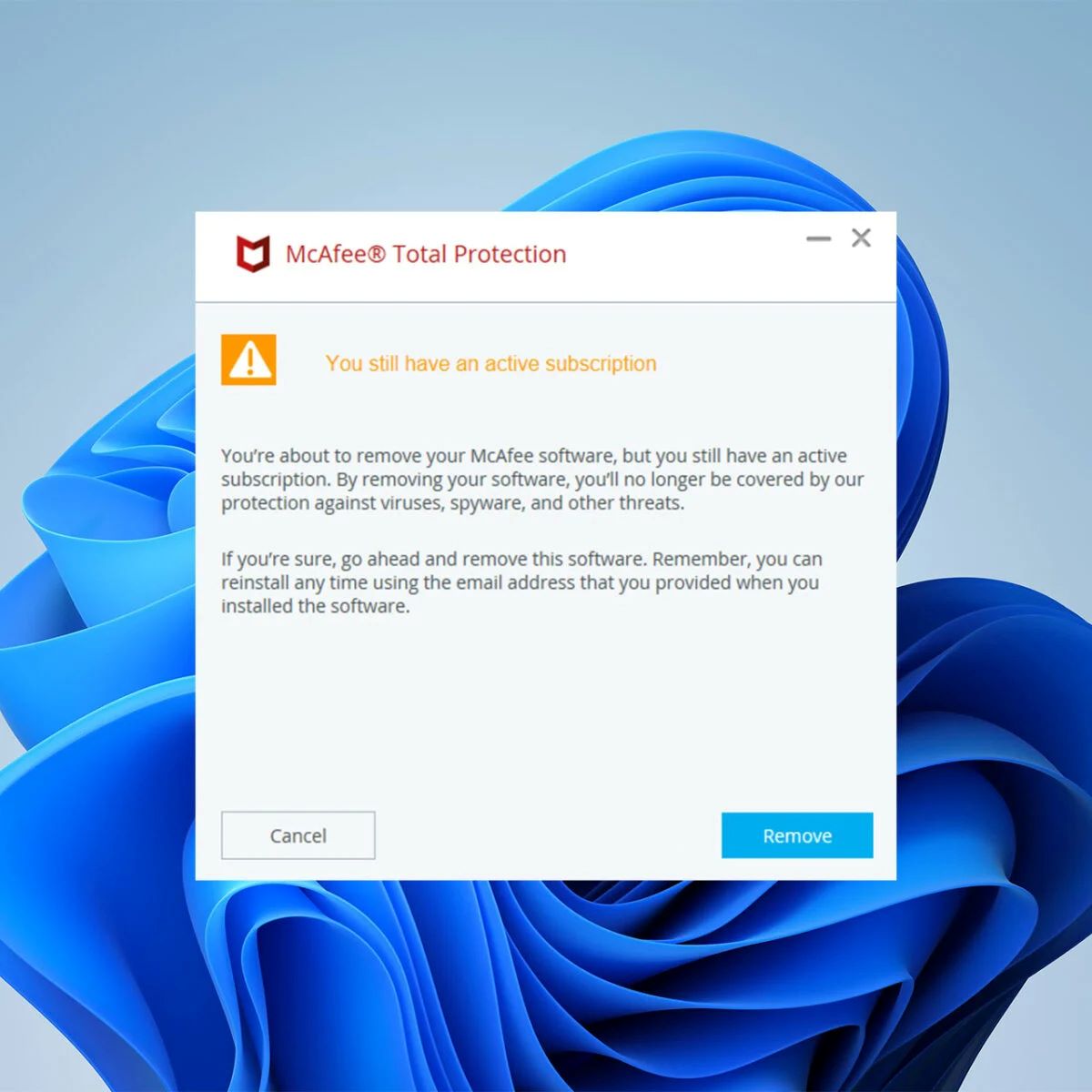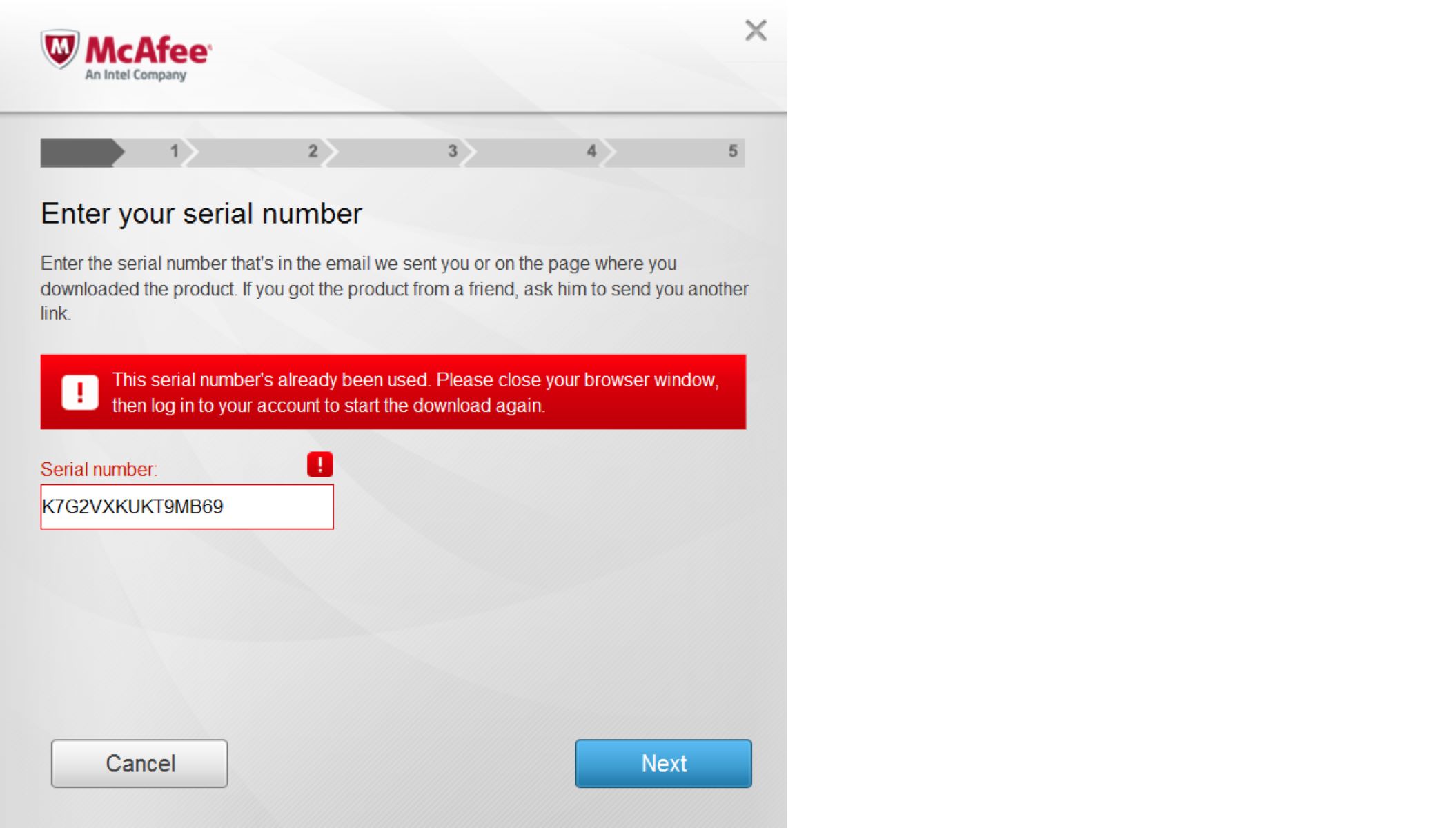Introduction
Welcome to this guide on how to turn off McAfee Antivirus. McAfee Antivirus is a popular security software that helps protect your computer from viruses, malware, and other online threats. While it is important to keep your system protected, there may be instances where you need to temporarily disable the antivirus software. This could be due to various reasons such as troubleshooting software conflicts, installing certain applications, or conserving system resources.
In this step-by-step tutorial, we will walk you through the process of turning off McAfee Antivirus. Please note that disabling your antivirus software should only be done temporarily and for specific purposes. It is always advisable to re-enable the antivirus as soon as you have completed the necessary tasks.
Before we proceed, it is crucial to understand that turning off your antivirus leaves your system vulnerable to potential threats. Make sure to only disable McAfee Antivirus if you have a good reason and take the necessary precautions to protect your system while the antivirus is disabled. Let’s get started with the process of disabling McAfee Antivirus.
Step 1: Open the McAfee Antivirus program
The first step in turning off McAfee Antivirus is to open the program on your computer. To do this, locate the McAfee Antivirus icon in the system tray, which is usually located in the bottom right corner of the screen. It is represented by a small red shield icon with an “M” on it.
Right-click on the McAfee Antivirus icon and a context menu will appear. From the menu, select the option that says “Open McAfee Antivirus” or a similar option. This will launch the McAfee Antivirus program, and you will be able to access its settings and features.
If you can’t find the McAfee Antivirus icon in the system tray, you can also search for it in the Start menu. Click on the Start button, type “McAfee Antivirus” in the search bar, and select the program from the search results.
Once you have opened the McAfee Antivirus program, you are ready to proceed to the next step.
Step 2: Access the main settings
After opening the McAfee Antivirus program, you need to access the main settings to make changes to the antivirus’s configurations. To do this, look for a menu or navigation panel within the program that allows you to access the settings.
The location and appearance of the settings menu may vary depending on the version of McAfee Antivirus you are using, but it is typically found in a prominent location within the program’s interface. Commonly, it is labeled as “Settings,” “Options,” or “Preferences.”
Once you have located the settings menu, click on it to open the configuration options for McAfee Antivirus.
Within the settings menu, you will find various categories or sections that allow you to customize different aspects of the antivirus program. These categories can include options related to real-time scanning, scheduled scans, firewall protection, web protection, and more.
Take your time to explore the settings and familiarize yourself with the different options available. This will help you understand how to disable the specific features of McAfee Antivirus that you want to turn off temporarily.
Now that you have accessed the main settings of McAfee Antivirus, you are ready to proceed to the next step and disable the desired features. Keep in mind that the specific options and labels might differ slightly depending on the version of McAfee Antivirus you are using, but the general process remains the same.
Step 3: Disable real-time scanning
Real-time scanning is a crucial feature of McAfee Antivirus that continuously monitors your computer for any suspicious or malicious activities in real-time. However, to temporarily turn off McAfee Antivirus, you will need to disable the real-time scanning function.
To disable real-time scanning, go back to the main settings menu of McAfee Antivirus (as explained in Step 2). Look for an option related to real-time scanning or real-time protection and click on it.
In the real-time scanning settings, you will see a toggle switch or a checkbox that allows you to enable or disable this feature. Simply switch the toggle switch to the “Off” position or uncheck the box to disable real-time scanning.
It is important to note that by disabling real-time scanning, your computer will be temporarily vulnerable to any potential threats during this time. Therefore, make sure to only turn off real-time scanning if you have a valid reason and take precautionary measures to protect your system while it is disabled.
Once you have disabled real-time scanning, you can proceed to the next step to turn off other features of McAfee Antivirus that you may want to disable temporarily.
Step 4: Turn off scheduled scans
In addition to real-time scanning, McAfee Antivirus also offers scheduled scans that automatically check your computer for threats at specific intervals. To continue with the process of disabling McAfee Antivirus, you will need to turn off these scheduled scans.
To disable scheduled scans, navigate back to the main settings menu of McAfee Antivirus (as mentioned in Step 2) and look for an option related to scheduled scans or scan settings.
Once you have found the scheduled scan settings, you will see a section that allows you to configure the scan frequency and timing. Within this section, locate the toggle switch or checkbox that enables or disables scheduled scans.
Switch the toggle switch to the “Off” position or uncheck the box to disable scheduled scans. By doing so, you are ensuring that the antivirus will no longer perform scans automatically at scheduled times.
Remember, temporarily turning off scheduled scans means that your computer will not be regularly checked for viruses or malware based on the set schedule. It is important to re-enable scheduled scans as soon as you have completed the task that required you to disable them.
Now that you have successfully disabled the scheduled scan feature, let’s move on to the next step to turn off another important aspect of McAfee Antivirus – firewall protection.
Step 5: Disable firewall protection
Firewall protection is a critical component of McAfee Antivirus that acts as a barrier between your computer and potential network threats. However, if you need to temporarily turn off McAfee Antivirus, you will also need to disable the firewall protection.
To disable firewall protection, return to the main settings menu of McAfee Antivirus (as explained in Step 2) and look for an option related to firewall or network protection.
Within the firewall settings, you will find a toggle switch or checkbox that allows you to enable or disable the firewall protection feature. Simply switch the toggle switch to the “Off” position or uncheck the box to disable firewall protection.
Disabling firewall protection temporarily opens your computer to potential network threats, so only turn off this feature if you have a valid reason to do so and take precautions to ensure the security of your system during this time.
Once you have disabled the firewall protection, you are ready to move on to the next step, which involves disabling web protection.
Note: It is crucial to re-enable firewall protection as soon as you have completed the necessary tasks that required it to be disabled.
Step 6: Disable web protection
Web protection is another important feature of McAfee Antivirus that helps safeguard your computer from malicious websites and online threats. However, if you need to temporarily disable McAfee Antivirus, you should also disable the web protection feature.
To disable web protection, go back to the main settings menu of McAfee Antivirus (as mentioned in Step 2) and look for an option related to web protection or online protection.
Within the web protection settings, you will find a toggle switch or checkbox that allows you to enable or disable this feature. Simply switch the toggle switch to the “Off” position or uncheck the box to disable web protection.
Disabling web protection temporarily means that your computer will not be actively monitored for potential online threats. It is essential to re-enable this feature once you have completed the specific tasks that necessitated its temporary deactivation.
Remember, while web protection is disabled, exercise caution when browsing the internet and avoid visiting suspicious websites or downloading files from untrusted sources.
Now that you have successfully disabled web protection, let’s proceed to the final step to confirm the changes and exit the McAfee Antivirus program.
Step 7: Confirm changes and exit the program
After disabling the desired features of McAfee Antivirus, it is important to confirm the changes you have made and exit the program properly. This will ensure that the settings are saved and the antivirus remains inactive until you choose to enable it again.
Firstly, double-check the settings within the McAfee Antivirus program to ensure that the real-time scanning, scheduled scans, firewall protection, and web protection features are all disabled.
Once you have confirmed the changes, click on the “Apply” or “Save” button within the settings menu to save the modifications you made to the antivirus configurations.
After saving the changes, it is recommended to exit the McAfee Antivirus program properly. Look for an option such as “Exit,” “Close,” or “Quit” within the program’s interface. Click on this option to exit the program.
By exiting the program, you are ensuring that the antivirus remains disabled until you choose to open it again and re-enable the necessary features.
It is crucial to note that while the antivirus is disabled, your computer may be more susceptible to potential threats. Therefore, it is essential to only disable McAfee Antivirus if you have a valid reason and to re-enable it as soon as you have completed the necessary tasks.
That’s it! You have successfully turned off and disabled McAfee Antivirus temporarily by following the steps outlined in this guide. Remember to exercise caution while your antivirus is disabled and to re-enable the necessary features once you’re done.
Conclusion
Disabling McAfee Antivirus temporarily can be useful in certain situations, such as troubleshooting software conflicts or conserving system resources. However, it is important to remember that turning off your antivirus leaves your computer vulnerable to potential threats. Therefore, it should only be done for specific purposes and with caution.
In this guide, we have provided a step-by-step process to help you turn off McAfee Antivirus. We started by opening the McAfee Antivirus program and accessing the main settings. Then, we walked you through disabling real-time scanning, turning off scheduled scans, disabling firewall protection, and disabling web protection. Finally, we emphasized the importance of confirming the changes and properly exiting the program.
While it is necessary to temporarily disable your antivirus at times, it is equally essential to re-enable it as soon as you have completed the tasks that required it to be disabled. Regularly updating your antivirus software and performing system scans are always recommended to ensure the ongoing security of your computer.
Remember, the steps outlined in this guide are specific to McAfee Antivirus, and the options and labels may vary slightly depending on the version you are using. If you encounter any difficulties or have concerns about disabling or re-enabling specific features, we recommend consulting the McAfee Antivirus documentation or seeking assistance from their support channels.
By following this guide and understanding the implications of temporarily disabling McAfee Antivirus, you can navigate the process confidently and make informed decisions about the security of your computer.
Stay safe and protect your system!

























